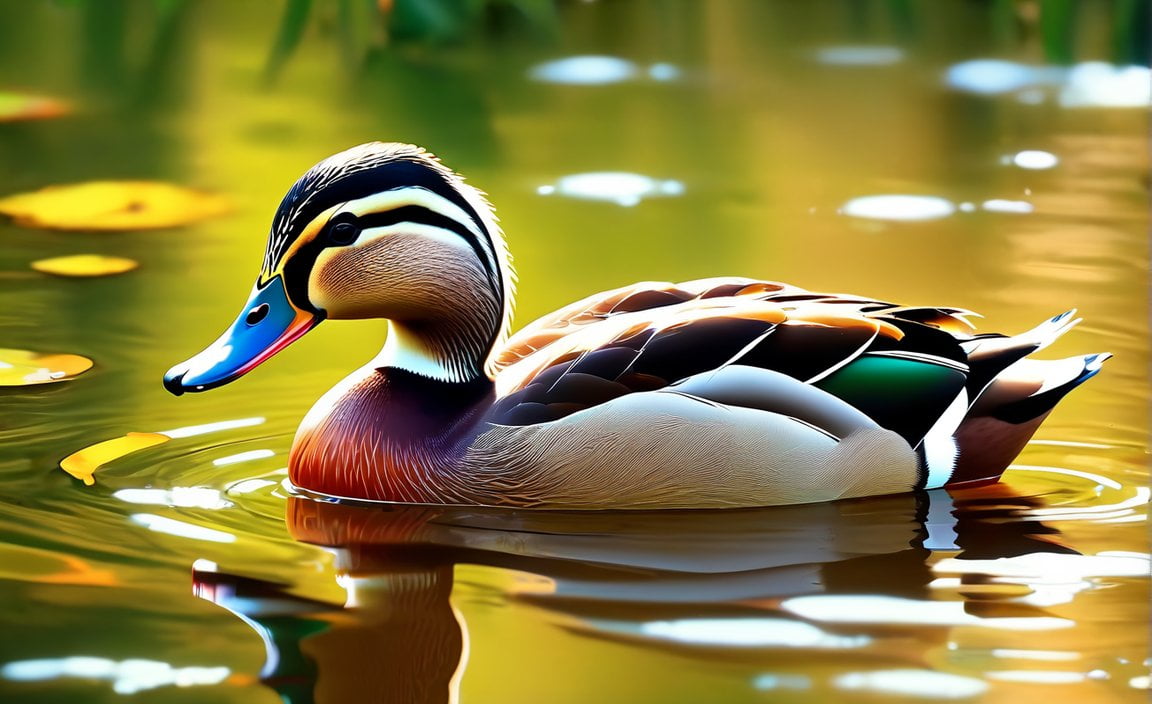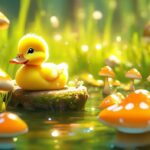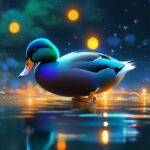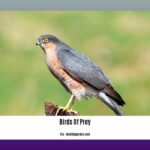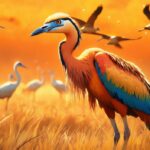Unveiling Animal Classification: Are Ducks Mammals? Welcome to the captivating world of animal classification, where the boundaries between different groups can sometimes blur. In this article, we delve into the intriguing question of whether ducks are mammals. To understand this, we must first grasp the concept of what defines a mammal and how reproduction in ducks compares to that of other mammals. Join us on this fascinating journey as we explore the intricacies of the animal kingdom and shed light on the unique characteristics that set mammals apart from other creatures.
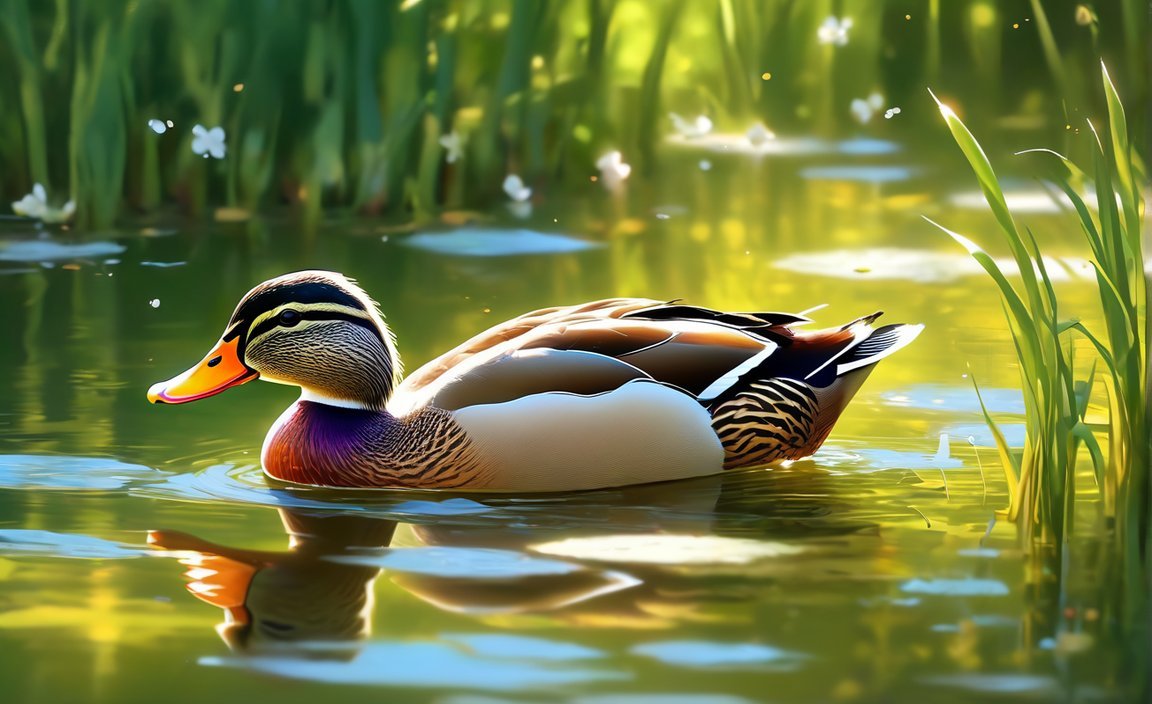
Key Takeaways:
- Ducks are classified as birds, specifically belonging to the family Anatidae, which also includes swans and geese. They are not mammals or amphibians.
- Ducks possess unique features such as webbed feet, waterproof feathers, and bills, which are distinct to birds and set them apart from other animal classes.
- Ducks are warm-blooded, egg-laying vertebrates that belong to the order of Anseriformes. Their classification has evolved over time as researchers gained more knowledge about them.
- Ducks are considered farm animals and are often raised for their eggs and meat, highlighting their role in agriculture and food production.
- Ducks have natural predators, including dogs, coyotes, wolves, foxes, bobcats, skunks, hawks, owls, bears, and snapping turtles, and they, in turn, feed on a variety of food sources.
- Understanding that ducks are birds allows us to appreciate and respect these fascinating creatures even more.
Are Ducks Mammals?
Ducks as Birds, not Mammals or Amphibians
Ducks are fascinating creatures that have often been mistaken for mammals or amphibians, but in reality, they are birds. Scientifically classified as birds belonging to the family Anatidae, which includes other waterfowl like swans and geese, ducks have several distinctive features that set them apart from mammals and amphibians.
Evolution of Duck Classification
Throughout history, scientists have continuously gathered knowledge about ducks, refining their classification. Ducks belong to the order Anseriformes, a group of warm-blooded, egg-laying vertebrates. Understanding the evolutionary journey of ducks and their classification gives us a deeper appreciation for these extraordinary creatures.
Unique Features of Ducks
Ducks possess a variety of unique characteristics that differentiate them from mammals and amphibians. They have webbed feet, waterproof feathers, and bills specifically designed for their environment. These adaptations allow them to navigate both land and water effortlessly. Ducks also lay eggs, a trait commonly associated with birds. These distinct features highlight their classification as birds rather than mammals or amphibians.
Ducks as Farm Animals
While ducks may not be commonly recognized as farm animals, they do play a significant role in agriculture and food production. Ducks are often raised on farms for their eggs and meat. This lesser-known fact sheds light on the economic and practical value of ducks in the farming industry.
Predator-Prey Dynamics
Ducks, like any other animal, have their fair share of predators. They face threats from animals such as dogs, coyotes, wolves, foxes, bobcats, skunks, hawks, owls, bears, and snapping turtles. In turn, ducks have a diverse diet that includes grasses, aquatic plants, fish, insects, small amphibians, worms, and small mollusks. These predator-prey dynamics play a crucial role in maintaining the delicate balance within ecosystems.
In conclusion, ducks are indeed birds, not mammals or amphibians. Their unique characteristics and remarkable adaptations make them a fascinating species to study. By understanding their classification, we can develop a deeper appreciation for the incredible diversity of the animal kingdom.
Sources:
1. UntamedAnimals.com
2. Farming Base
Ducks are fascinating creatures, capable of amazing feats. Have you ever wondered if ducks can eat mushrooms? Find out the answer and explore more about their diet here. Curiosity sparked, click the link to satisfy your inquisitive mind.
In the dark, when most animals struggle to navigate, ducks possess a unique ability. Discover the secrets of their night vision and learn if ducks can see in the dark here. Unveil the mysteries and be amazed by their incredible eyesight.
Water and lions may seem like an unusual combination, but do we really know how they feel about it? Delve into the intriguing world of these majestic creatures and find out if lions like water here. Prepare to be awestruck as you uncover their unexpected relationship with this element.
Polar bears are known for their sheer strength and incredible power. Ever wondered just how strong they are? Brace yourself for jaw-dropping facts and figures by unraveling the secrets of their might here. Prepare to be amazed by the true magnitude of a polar bear’s strength.
Reproduction in Ducks
Ducks, fascinating creatures of the avian world, have a unique reproductive cycle that sets them apart from mammals. This article explores the intricacies of duck reproduction, shedding light on the distinctive traits and processes that characterize their breeding habits.
The Reproductive System of Ducks
Ducks, like other avian species, possess a reproductive system designed specifically for their egg-laying nature. Unlike mammals, ducks are oviparous, meaning they lay eggs rather than giving birth to live young. These eggs are incubated and hatched outside the mother’s body.
Most ducks undergo three phases during their reproductive cycle: the prenuptial acceleration phase, the culmination phase, and the refractory period. These phases are closely linked to their annual breeding patterns and are influenced by environmental factors such as temperature and daylight duration.
Courtship and Mating Behavior
Male ducks often establish territories during the spring breeding season to attract and court potential mates. They display vibrant plumage and engage in elaborate courtship rituals, such as head-bobbing, wing-flapping, and vocalizations, to entice females.
During mating, male ducks employ a unique reproductive structure called a phallus, which aids in the transfer of sperm to the female. This phallus is a temporary and retractable organ that differs from the permanent genitalia found in mammals.
Nesting and Egg-laying
After successful mating, female ducks search for suitable nesting sites, commonly near water bodies. They construct nests using materials such as vegetation and feathers to create a cozy lining. Once the nest is prepared, the female begins the process of egg-laying.
Ducks ovulate and produce eggs, but they do not have menstrual cycles or periods like mammals. Instead, they release eggs periodically, typically laying one egg per day until the clutch is complete. The number of eggs in a clutch varies across duck species but can range from 6 to 14 eggs on average.
Incubation and Hatching
Once the clutch is complete, the female begins incubating the eggs by sitting on them to provide warmth. This process allows the embryos within the eggs to develop and grow. The incubation period varies depending on the duck species but generally lasts around 26 to 28 days.
When the time is right, the eggs start hatching, and adorable ducklings emerge into the world. They possess downy feathers and are capable of walking and swimming shortly after hatching. The mother leads her brood to water, where they learn essential survival skills under her guidance.
Conclusion
In conclusion, ducks have a remarkable reproductive cycle tailored to their avian nature. They lay eggs, undergo courtship rituals, and exhibit unique mating behaviors. Understanding the intricacies of duck reproduction contributes to our broader appreciation of the diverse strategies employed by various members of the animal kingdom.
Key Takeaways:
- Ducks are oviparous, meaning they lay eggs, unlike viviparous mammals.
- Male ducks establish territories and engage in elaborate courtship rituals to attract mates.
- Female ducks build nests and lay eggs periodically until the clutch is complete.
- Duck eggs undergo incubation, lasting around 26 to 28 days, before hatching.
- The hatched ducklings possess downy feathers and quickly learn survival skills under the mother’s guidance.
Sources:
-
Lee, Rachel. (2023). “Do Ducks Have Periods? (9 Facts About Ducks Reproductive Cycle).” Farmhouse Guide. Link
-
Den of Animals. (2023). “Are Ducks Mammals Or Amphibians? (Explained).” Den of Animals. Link
Comparing Ducks To Other Mammals
When it comes to classifying animals, the distinction between different groups can sometimes be confusing. Ducks, for instance, are often mistaken for mammals due to their warm-blooded nature and ability to swim. However, despite these similarities, ducks are not mammals but rather belong to the class of birds, specifically the waterfowl family Anatidae. Let’s explore the characteristics that set ducks apart from mammals and delve into the fascinating world of animal classification.
Ducks: Birds, Not Mammals
Ducks possess several key traits that differentiate them from mammals. For starters, they have beaks instead of jaws, feathers instead of fur, and lay eggs instead of giving birth to live young. These features align them with the avian classification, making them part of the diverse world of birds.
Unique Duck Traits
Beaks instead of Jaws
One of the most distinct features of ducks is their beaks. Unlike mammals, which have jaws and teeth, ducks have evolved beaks that are specifically designed for their feeding needs. These beaks vary in shape and size depending on the species and are used for various purposes, such as hunting for food in water and mud.
Feathers instead of Hair
Feathers serve as the defining characteristic of birds, and ducks are no exception. These specialized structures play a crucial role in insulation, waterproofing, and flight. Ducks have a unique arrangement of feathers that allows them to thrive in their watery habitats, providing both protection and buoyancy.
Egg-Laying Reproduction
Unlike mammals that give birth to live young, ducks lay eggs as a means of reproduction. This trait is common among birds, enabling them to ensure the survival of their species. Female ducks diligently construct nests and incubate their eggs until they hatch, followed by the nurturing and guidance of their newly hatched ducklings.
Ducks Vs. Mammals
To further emphasize the distinction between ducks and mammals, it’s important to highlight the contrasting characteristics that are unique to each group:
Mammals: The Characteristics
Mammals possess several characteristics that set them apart from ducks and other animal classifications:
- Mammals have fur or hair covering their bodies, which helps to regulate body temperature.
- They have mammary glands that produce milk to nourish their offspring.
- Mammals give birth to live young, rather than laying eggs.
- Unlike birds and ducks, mammals typically have a lower body temperature, although they are also warm-blooded.
Key Takeaways:
- Ducks are birds, not mammals or amphibians.
- They possess beaks instead of jaws, feathers instead of hair, and lay eggs as a method of reproduction.
- Mammals, on the other hand, have fur or hair, mammary glands for milk production, give birth to live young, and maintain lower body temperatures compared to birds.
- Understanding the classification differences between ducks and mammals helps us appreciate the diversity within the animal kingdom.
References:
[1]: Are Ducks Mammals? All You Need To Know | Bird Journal
[2]: Is Duck a Mammal? (4 Reasons to Compare) | Farming Base
[3]: Are Ducks Mammals Or Amphibians? (Explained) | DenofAnimals
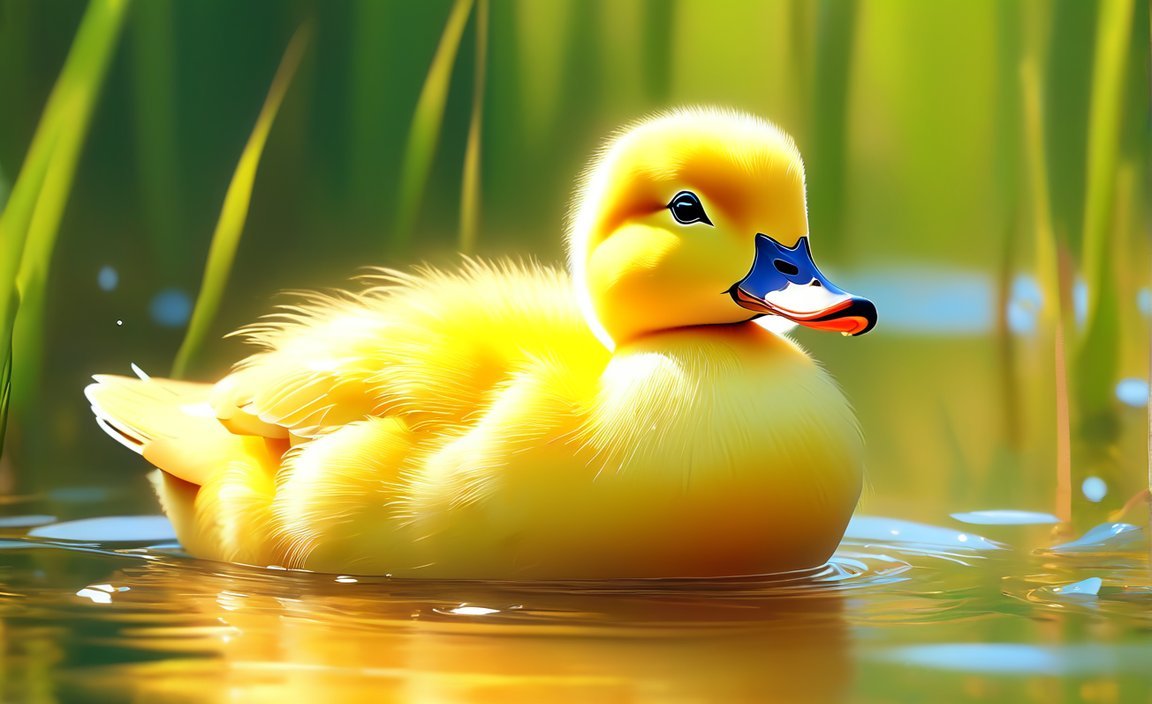
FAQ
Q1: Is Duck a mammal?
A1: No, ducks are not mammals. They belong to the class of birds and are specifically classified as waterfowl in the family Anatidae. Unlike mammals, ducks lay eggs and have feathers instead of fur.
Q2: What is a mammal?
A2: Mammals are a class of animals that possess certain characteristics, including being warm-blooded, having mammary glands for milk production, and giving birth to live young. They usually have hair or fur covering their bodies. Ducks do not meet these criteria and therefore are not considered mammals.
Q3: How does reproduction in ducks differ from other mammals?
A3: Reproduction in ducks is different from other mammals. Ducks are oviparous, which means they lay eggs. Mammals, on the other hand, are viviparous and give birth to live young. Ducks have an egg-laying method of reproduction as opposed to the internal fertilization and gestation process in mammals.
Q4: How do ducks compare to other mammals?
A4: Ducks differ from other mammals in various ways. Unlike most mammals, ducks have beaks instead of jaws, feathers instead of fur, and lay eggs instead of giving birth to live young. They also lack mammary glands for milk production, which is a defining feature of mammals. These unique characteristics set ducks apart from other mammals.
Q5: Are there any similarities between ducks and mammals?
A5: While ducks and mammals differ in many aspects, they are both warm-blooded animals. Both ducks and mammals have the ability to regulate their body temperature internally. However, other characteristics such as reproduction, body coverings, and method of offspring development distinguish ducks from mammals.
- Unveiling the Enigma: Mansoureh Khojasteh Bagherzadeh’s Public Appearances & Private Life in Iran - July 18, 2025
- Unveiling the Mystery: Mansoureh Khojasteh Bagherzadeh’s Husband: A Rare Glimpse into a Private Life - July 18, 2025
- Unveiling Masoud Khamenei’s Mother: Power, Influence, and Iran’s Future - July 18, 2025
